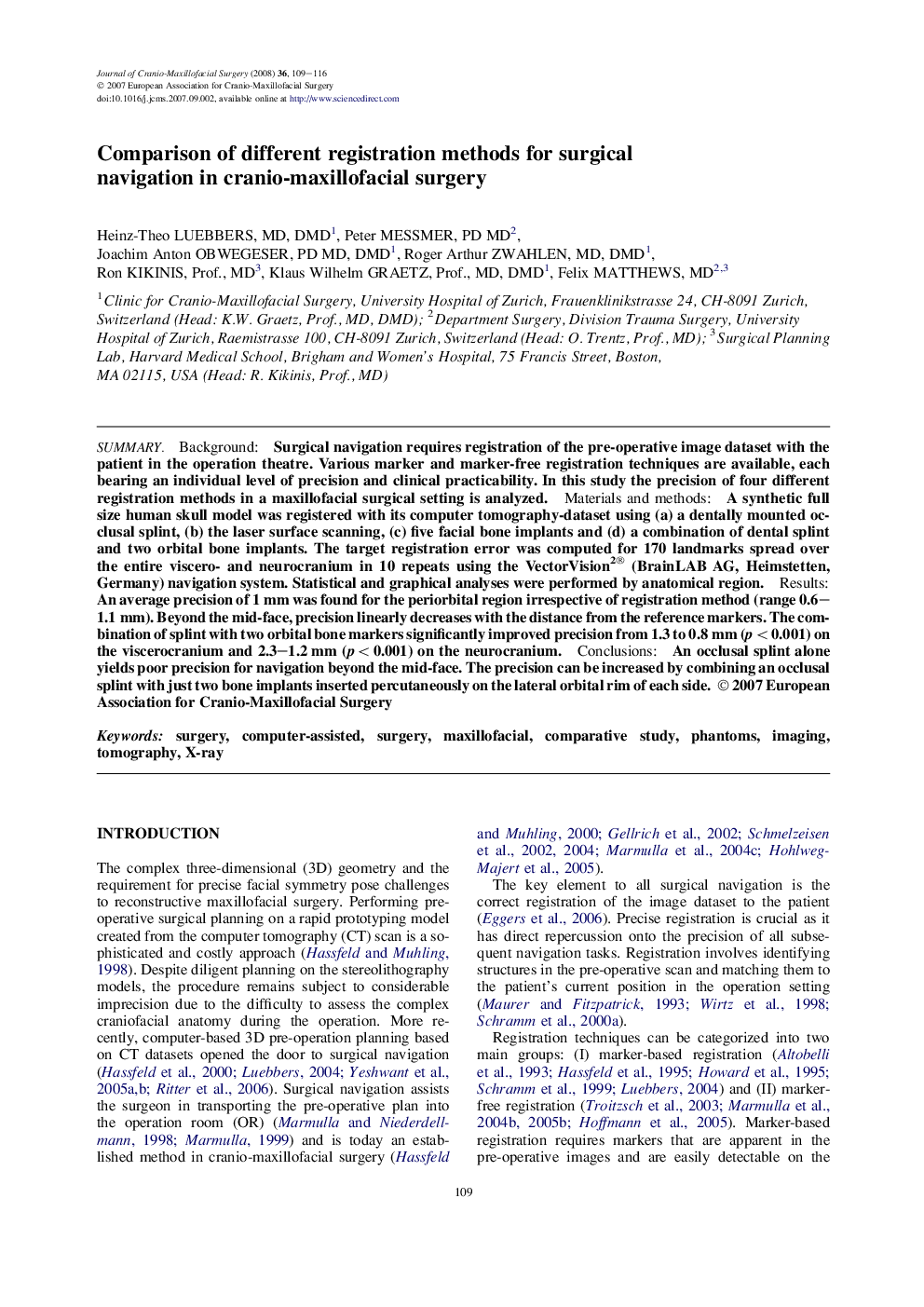| Article ID | Journal | Published Year | Pages | File Type |
|---|---|---|---|---|
| 3144062 | Journal of Cranio-Maxillofacial Surgery | 2008 | 8 Pages |
SummaryBackgroundSurgical navigation requires registration of the pre-operative image dataset with the patient in the operation theatre. Various marker and marker-free registration techniques are available, each bearing an individual level of precision and clinical practicability. In this study the precision of four different registration methods in a maxillofacial surgical setting is analyzed.Materials and methodsA synthetic full size human skull model was registered with its computer tomography-dataset using (a) a dentally mounted occlusal splint, (b) the laser surface scanning, (c) five facial bone implants and (d) a combination of dental splint and two orbital bone implants. The target registration error was computed for 170 landmarks spread over the entire viscero- and neurocranium in 10 repeats using the VectorVision2® (BrainLAB AG, Heimstetten, Germany) navigation system. Statistical and graphical analyses were performed by anatomical region.ResultsAn average precision of 1 mm was found for the periorbital region irrespective of registration method (range 0.6–1.1 mm). Beyond the mid-face, precision linearly decreases with the distance from the reference markers. The combination of splint with two orbital bone markers significantly improved precision from 1.3 to 0.8 mm (p < 0.001) on the viscerocranium and 2.3–1.2 mm (p < 0.001) on the neurocranium.ConclusionsAn occlusal splint alone yields poor precision for navigation beyond the mid-face. The precision can be increased by combining an occlusal splint with just two bone implants inserted percutaneously on the lateral orbital rim of each side.
